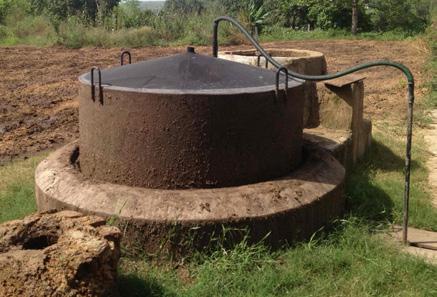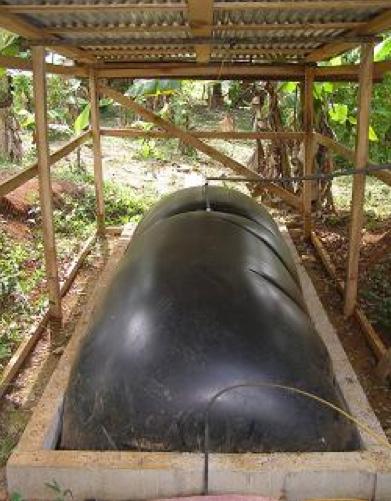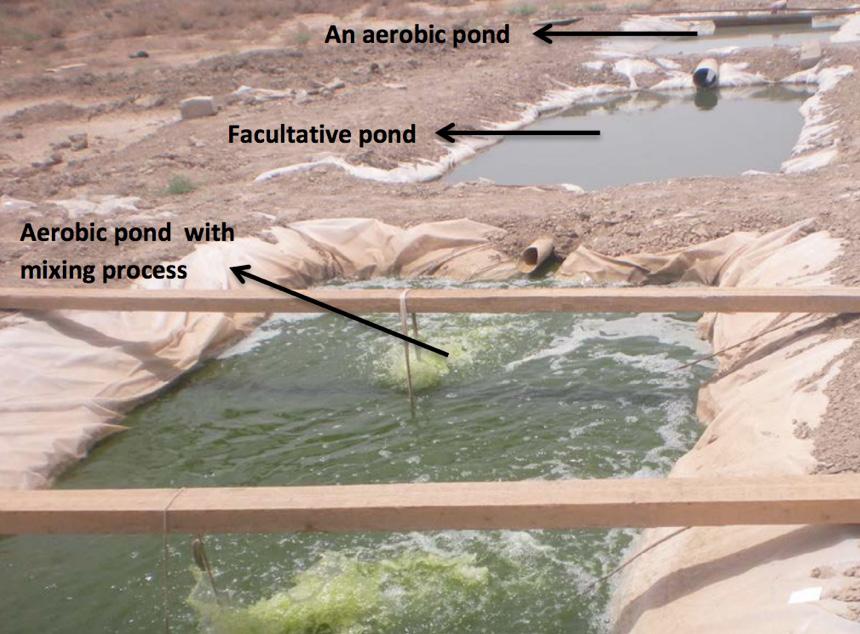
2 minute read
Types of Decentralized Sanitation
TYPES OF DECENTRALIZED SANITATION
Anaerobic Treatment
Decentralized anaerobic treatment technologies sanitize wastewater by utilizing the power of microorganisms to break down organic matter in the absence of oxygen. One of the biggest benefits of this form of decentralized treatment is the production of energy (biogas) (Lettinga, 1995). Additionally, the technology is easy to implement and sludge is stable (Lettinga, 1995). However, this methodology is less effective at pathogen removal (Parkinson and Tayler, 2003). There are a variety of specific technologies under the umbrella of anaerobic treatment including septic systems, anaerobic waste stabilization ponds, anaerobic filters, up flow anaerobic sludge blanket digesters, and baffled reactors.
Waste Stabilization Ponds
Waste stabilization ponds (WSPs) are a series of man-made shallow ponds that utilize natural processes of bacteria to treat and sanitize wastewater (Kayombo et al., 2005, Parkinson and Tayler 2003). They are manmade structures that utilize natural processes. Waste stabilization ponds are cheap, easy to develop and maintain, and require little energy (Kayombo et al., 2005). Given their long retention times, WSPs effectively remove pathogens from the water rather than break down organic material (Parkinson and Tayler, 2003). Moreover, the ponds are an ideal location for reuse of produced resources, such as aquaponics systems (Parkinson and Tayler, 2003). However, WSPs require a long retention time and a lot of space, which may not be available in the peripheral urban environment (Parkinson and Tayler, 2003).
203 Example of Anaerobic Treatment in Another Community (Gobar Gas plant at Aman Bagh n.d.)


204 Aerobic Pond Process.
CASE STUDY: Al-Dewaniyah, Iraq
This case discusses experimental provision of waste stabilization ponds. This is for the Al-Dewaniyah province in Iraq with a sample population of about, 10,000 people. The province of Al-Dewaniyah has a wastewater treatment plant, but it is beyond capacity so the proposed WSPs are a method of expanding capacity. Al-Hashimi & Hussain (2013) concluded that WSPs are a promising method for water treatment as they are easy to operate and maintain, and use very little energy in the treatment process. Overall, there are advantages to WSPs, but they may not be the most sensible option for Ocupação Anchieta given the space required to treat water.
205 (left) Example of Anaerobic Treatment in Another Community (Build a Biogas Plant n.d.)






